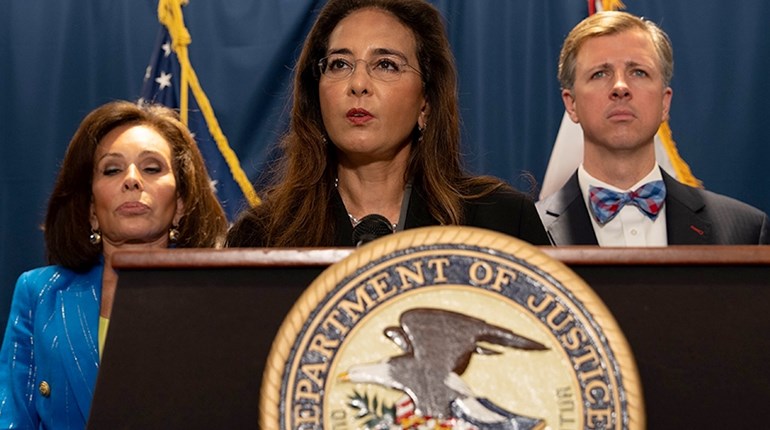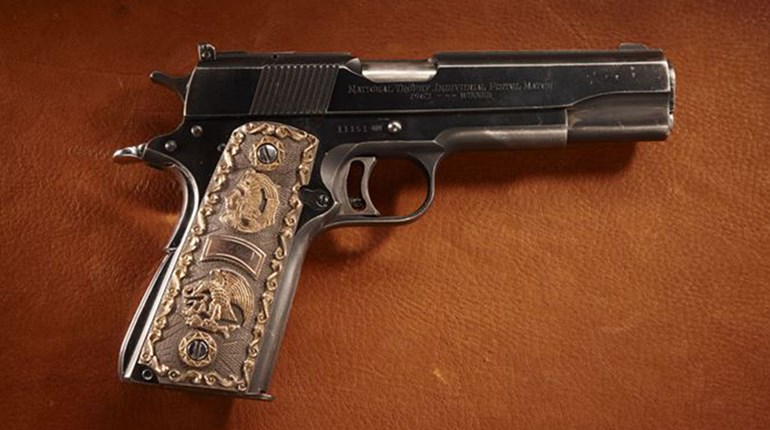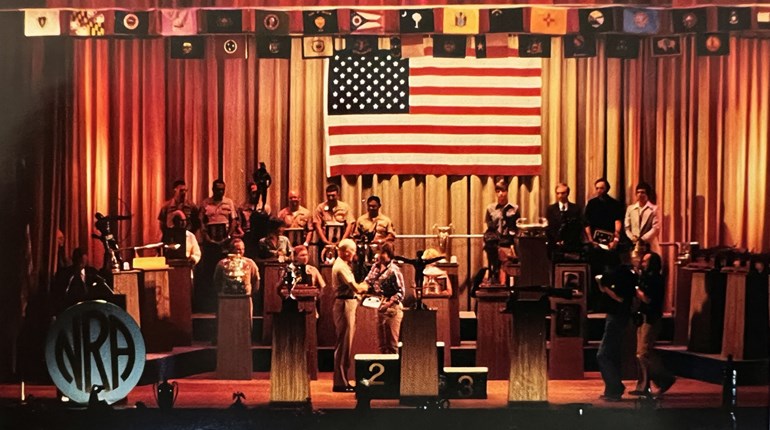
Some may not remember that the Second Amendment was once facing the prospect of extinction. Instead, the right to keep and bear arms is in the midst of a modern renaissance, thanks to the U.S. Supreme Court’s historic decision in New York State Rifle & Pistol Association v. Bruen. How we arrived at this moment shows the power of coordinated pro-gun activism. It also points the way to a brighter future for the right to keep and bear arms, but only if we heed the lessons of history and keep up the efforts that have brought us this far.
Two pivotal events coalesced for gun owners in 2016. The first was the unexpected death of Justice Antonin Scalia, author of the landmark decision District of Columbia v. Heller, which recognized an individual right under the Second Amendment to keep and bear firearms in common use for self-defense. The second was the presidential election.
As much as anything, the 2016 election was a referendum on who would appoint Scalia’s replacement and determine the balance of power on the Supreme Court, which after Scalia’s death was evenly divided between two factions.
 On one side were proponents of a “Living Constitution” that yielded to whatever elite opinion considered necessary or preferable in the moment. On the other were Originalists like Scalia who believed the Constitution means what it says, as publicly understood at the time of its adoption, and constrains the decisions of policymakers.
On one side were proponents of a “Living Constitution” that yielded to whatever elite opinion considered necessary or preferable in the moment. On the other were Originalists like Scalia who believed the Constitution means what it says, as publicly understood at the time of its adoption, and constrains the decisions of policymakers.
The distinction was fundamental for gun owners, as the latter method of interpretation led the Supreme Court to hold that the Second Amendment took certain types of gun control—including the District’s handgun ban—“off the table.” The minority justices in that opinion, on the other hand, would have let the right be “balanced” against the government’s asserted interest in public safety, which would have given activist judges the tools they needed to uphold virtually any restriction or prohibition on the right to keep and bear arms.
Justice Scalia died on Feb. 13, 2016, leaving Barack Obama ample time, as a practical matter, to appoint a replacement. Obama’s pick to succeed Scalia was none other than Merrick Garland, then a judge on the U.S. Court of Appeals for the D.C. Circuit. The NRA, however, made sure the public and pro-gun senators were aware that Garland had voted in Heller’s predecessor case to give Washington, D.C., a second chance to defend its handgun ban before the full D.C. Circuit, after a three-judge panel of that circuit had ruled it violated the Second Amendment. As we noted at the time, you don’t ask for a do-over of something you consider correctly done.
Fortunately, the balance of power in the U.S. Senate—which must assent to federal judicial nominations—was then in pro-gun hands. Majority Leader Mitch McConnell did not bring Garland’s nomination up for a vote, arguing that in an election year it was proper to let the voters choose who should decide the balance of power on the court, rather than cede that choice to the outgoing president.
Meanwhile, the NRA made sure the electorate fully understood where presidential contenders Donald Trump and Hillary Clinton stood on the Second Amendment. Trump, for his part, explicitly made judicial nominations a centerpiece of his campaign, promising to appoint jurists in Scalia’s Originalist mold. Clinton, by contrast, openly embraced the gun-control policies of Australia, which during the 1990s had infamously banned formerly lawful guns and forced their law-abiding owners to turn them over to the government in what was called a “buyback,” but was actually compelled surrender.
Trump, of course, would go on to defeat Clinton in a stunning upset. He then made good on his promise to appoint Originalist judges, including Neil M. Gorsuch as his replacement for Scalia and two other Supreme Court appointments, Brett M. Kavanaugh and Amy Coney Barrett.
All three of those justices would go on to vote for the majority in Bruen, which, in its own way, is as important as Heller itself. Whereas Heller authoritatively articulated the Second Amendment’s individual right, Bruen gave renewed substance to that right by requiring lower courts to resolve Second Amendment cases consistently with “this Nation’s historical tradition of firearms regulation.” That is, if the government cannot point to a “relevantly similar” historical analog for a firearm regulation or prohibition dating to the founding era, that regulation cannot stand under the Second Amendment. That test is as strong an embrace of Scalia-style Originalism as can be found in American law.
Meanwhile, gun owners need not guess where Merrick Garland would have stood on the Second Amendment as a U.S. Supreme Court justice. They need only consider his performance as U.S. attorney general, the post to which Joe Biden appointed Garland to help execute his radical gun-control agenda.
Garland’s Department of Justice has been politicized against gun owners to an extent not seen since the dark days of Bill Clinton’s presidency. The Bureau of Alcohol, Tobacco, Firearms and Explosives in particular has reversed decades of settled interpretations and practices to crack down on paperwork errors by federal firearm licensees (FFLs), braced pistols, unfinished frames and receivers and record-keeping requirements for FFLs (to cite only a few examples).
A Justice Merrick Garland as the tie-breaking vote on Second Amendment cases would have spelled the end of the individual right to keep and bear arms as we know it. And had arch anti-gunner Hillary Clinton been making other judicial appointments from 2016 to 2020, the situation would have been even worse.
Instead, it was President Trump who made those appointments, cementing one of the most important and enduring legacies of his administration. Not only did Trump appoint three staunch constitutionalists to the Supreme Court, solidifying the high court’s judicially conservative majority, but also more than 200 of his lower court nominations were confirmed. This altered the balance of power in at least three judicial circuits from Democrat-appointed majorities to Republican ones. This means generations of greater reverence for the original meaning of the U.S. Constitution and less rubber-stamping of radically progressive, unconstitutional policies.
Firearm prohibitionists have made it clear that they don’t intend to quit.
Again, it was Trump’s collaboration with Senate Majority Leader Mitch McConnell that helped make these accomplishments possible. Their shared vision for the judiciary created a firewall against the excesses of Joe Biden’s runaway government.
These efforts culminated for gun owners in the Bruen decision. That case invalidated New York City’s “may-issue” concealed-carry-permitting regime and resolved any doubts that the right to “bear” arms extends into public spaces and cannot be discretionarily withheld by permitting officials.
It also swept aside the Heller-defying “balancing tests” that most courts used to resolve Second Amendment cases and that allowed activist judges to weight the scales to uphold all manner of oppressive gun control. Bruen’s standard of review, by contrast, places a rigorous showing of proof on the government and limits judicial policy-making.
What hasn’t changed is anti-gunners’ defiance and denial of the Supreme Court’s attempt to enforce the Second Amendment. New York responded to the decision by making its concealed-carry regime even stricter than before, and other reliably anti-gun states—including California and New Jersey—followed suit. A number of states also moved to quickly ban large categories of firearms and magazines or to enact other forms of “innovative” gun control unknown to America’s founding generations.
Several of these efforts, however, promptly ran into the brick wall erected by Bruen’s standard of review. Large portions of New York and New Jersey’s concealed-carry laws were promptly declared unenforceable by federal courts in NRA-backed lawsuits. A Delaware law attempting to ban self-made firearms has for now met a similar fate. And gun control that had survived Second Amendment challenges after Heller is now falling to the Bruen standard, including a ban on handgun acquisition by young adults and prohibitions relating to minor indiscretions that have never justified infringements of other constitutional rights.
These cases face years of further proceedings and appeals, and only a select few will end up before the Supreme Court. But even lower courts can no longer simply rubberstamp overreaching gun-control laws as they once did.
None of this happened coincidentally. It was instead the direct result of visionary activism and grassroots mobilization spearheaded by your NRA. No single organization has been more involved in the electoral, litigation and educational efforts that have made the Second Amendment’s 21st century rebirth possible. And no patriots have played a greater role in these events than NRA members, whose tireless efforts on the ground have brought these plans to fruition.
But, as ever, the work has just begun. The firearm prohibitionists have made it clear that they don’t intend to quit; they are continually expanding their tactics beyond the legislatures to leverage their advantages in the media, on Wall Street, in boardrooms and with the technology platforms that play an ever-increasing role in daily life.
Rest assured, your NRA will meet them wherever the battle is joined. Shoulder to shoulder with our members, we will ensure the Second Amendment and America’s founding freedoms endure.


































